Are you planning a trip to Japan and wondering what the best places to visit are? Japan offers a unique blend of ancient traditions and modern innovation. Let SIXT.VN guide you through the top tourism destinations in Japan, ensuring a memorable and hassle-free travel experience. Explore iconic landmarks, cultural treasures, and natural wonders with our expert travel tips and services. Discover the best of Japan with our travel agency.
1. Majestic Mount Fuji
Mount Fuji (Fuji-san), Japan’s most iconic landmark and highest peak, stands at 3,776 meters. This mountain is visible from Tokyo and is celebrated in art and literature. UNESCO recognized its world cultural significance in 2013.
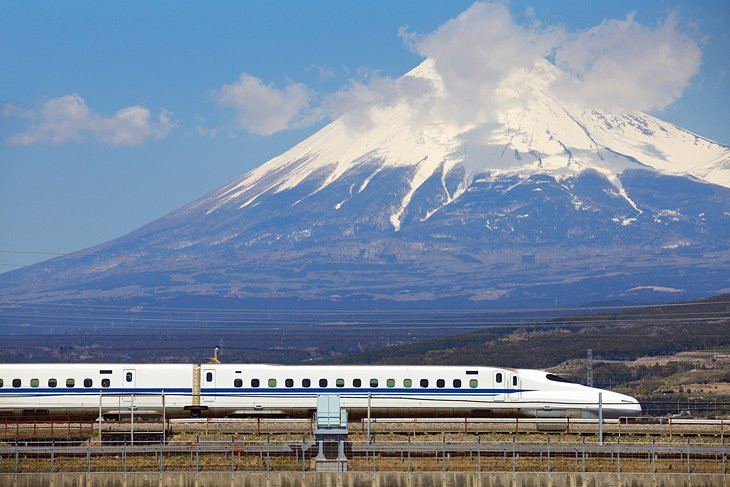 Mount Fuji
Mount Fuji
Many people climb Mount Fuji as a pilgrimage, watching the sunrise from the summit. The climb usually starts from the 5th Station, taking about six hours. Mountain huts provide overnight stops for those attempting the complete climb. Alternatively, viewing Mount Fuji from a distance or from a train offers a comfortable experience.
2. Imperial Tokyo
The Imperial Palace, Tokyo’s famous landmark, features 17th-century parks surrounded by walls and moats. Although most of the palace is closed to the public, visitors can stroll the grounds and explore the East Higashi-Gyoen Garden.
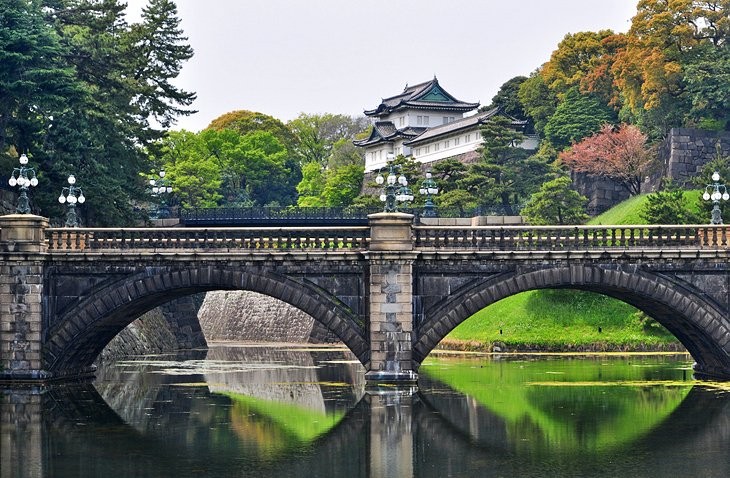 Imperial Palace and Nijubashi Bridge
Imperial Palace and Nijubashi Bridge
The Nijubashi Bridge, known as the “double bridge,” offers a romantic view. The Ginza shopping district, with the Kabuki-za Theatre and Shimbashi Enbujo Theatre, is another must-see. Ginza is popular for its Kabuki performances, traditional Azuma-odori dances, and Bunraku performances.
3. Hiroshima Peace Memorial Park
Hiroshima Peace Memorial Park commemorates the victims of the atomic bombing in August 1945. Visited by over a million people annually, the park symbolizes lasting peace.
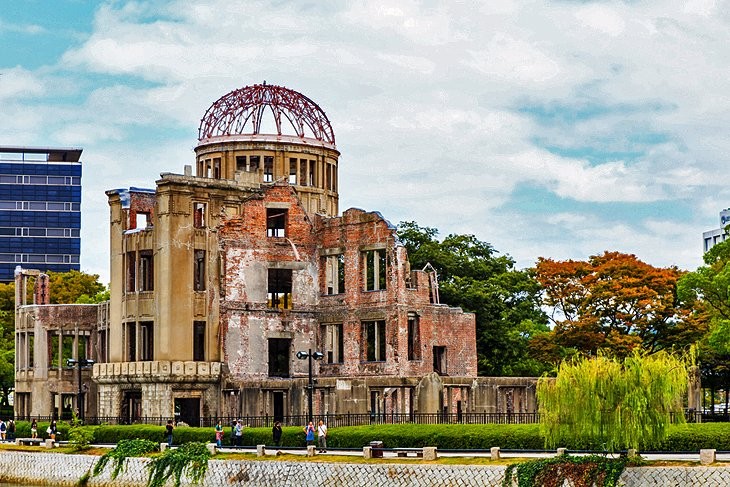 Hiroshima Peace Memorial Park
Hiroshima Peace Memorial Park
The park includes the Peace Memorial Museum, Memorial Cenotaph, Flame of Peace, and Atom Bomb Dome. These monuments honor the victims and promote world peace.
4. Historic Kyoto
Kyoto attracts over 10 million visitors annually with its well-preserved streets and architecture. As Japan’s cultural center, Kyoto boasts numerous museums and art galleries.
 Bamboo forest in Kyoto
Bamboo forest in Kyoto
Highlights include the 14th-century Golden Pavilion (Kinkaku-ji) and Nijo Castle. The Kyoto Imperial Palace (Kyoto-gosho), built in AD 794, is a popular historic site. The Arashiyama Bamboo Grove is a must-visit for nature lovers.
5. The Island Shrine of Itsukushima, Miyajima
Miyajima, a short ferry ride from Hiroshima, is famous as Japan’s Shrine Island. The Itsukushima Shrine, a Shinto temple dedicated to the Princess daughters of the wind god Susanoo, dates back to the eighth century.
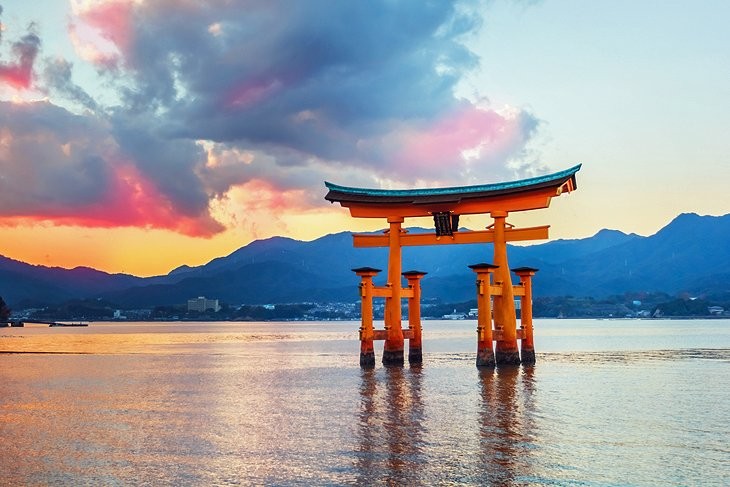 The Island Shrine of Itsukushima
The Island Shrine of Itsukushima
The shrine’s buildings rise out of the bay waters, supported by piles. The Great Floating Gate (O-Torii) appears to float on water at high tide. Visitors can explore the Honden, Heiden, Haiden, and Senjokaku.
6. Temple City: Historic Nara
Nara, a hub of Japanese culture, features historic buildings, national treasures, and artworks. The city boasts old temples, including the Kofuku-ji Temple and Todai-ji (Great East Temple).
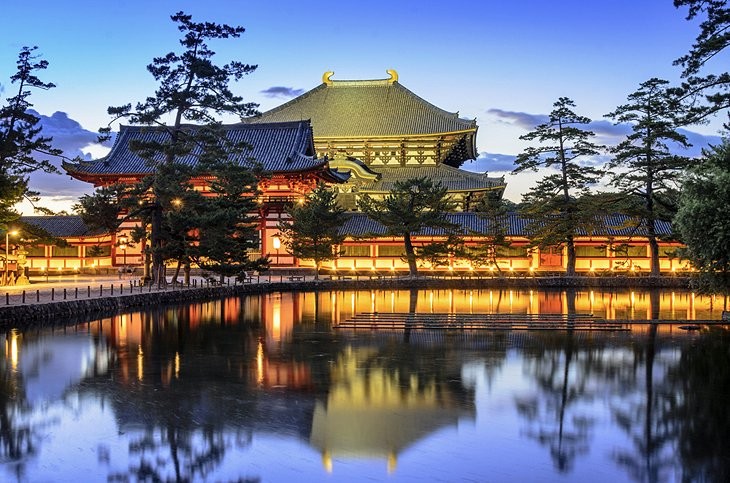 Temple City: Historic Nara
Temple City: Historic Nara
Todai-ji is famous for its bronze statue of the Great Buddha (Daibutsu), cast in AD 749. The Great South Gate (Nandaimon) and the Hall of the Great Buddha are also notable.
7. Osaka Castle
Osaka Castle, built in 1586 by Toyotomi Hideyoshi, was the country’s largest fortress. The current structure, built in 1931, remains true to the original design.
The five-story, 42-meter-tall main tower offers views over Osaka. Osaka Castle Park includes the Hokoku Shrine. Shitennō-ji, Japan’s first Buddhist temple, features a five-story pagoda and decorated buildings.
8. Chūbu-Sangaku National Park and the Japanese Alps
Chūbu-Sangaku National Park features the Hida Mountains, or Japanese Alps. This region contains high peaks, including Hotaka and Yari.
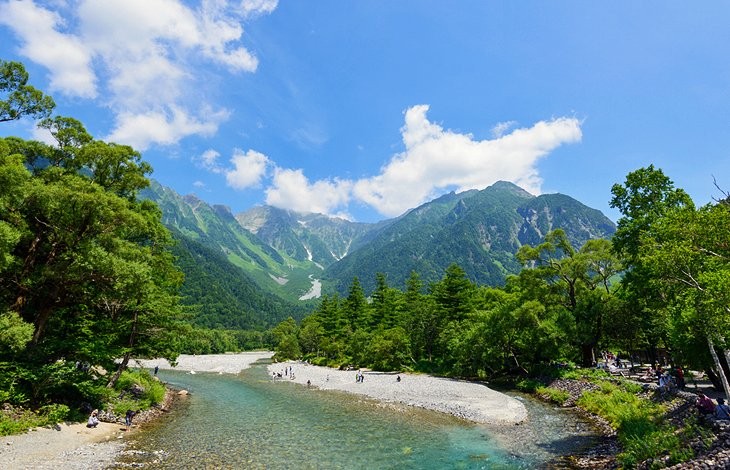 Chūbu-Sangaku National Park and the Japanese Alps
Chūbu-Sangaku National Park and the Japanese Alps
The Japanese Alps attract walkers and climbers in summer and skiers in winter. The park boasts diverse flora and fauna, hot springs, spas, and resorts like Kamikōchi.
9. The Atsuta Shrine, Nagoya
The Atsuta Shrine in Nagoya is Japan’s most important Shinto shrine, attracting over five million visitors annually. Established in the first century, the shrine preserves the “grass-mowing sword” (kusanagi-no-tsurugi).
The Hongu and the treasury with artworks, paintings, ceramics, and masks are notable. Nagoya Castle, built in 1612, features a 48-meter-high main tower with gilded dolphins (shachi).
10. Fukuoka Castle Ruins and the City’s Ancient Festivals
The ruins of Fukuoka Castle in Maizuru Park offer leafy walking trails and views over the Naka River. The park is beautiful in spring with cherry blossoms.
Fukuoka is known for events and festivals, including Hakata Gion Yamakasa. Canal City Hakata, with a canal, shops, hotels, restaurants, and a theater, is a modern attraction.
11. Sapporo, Hokkaido
Sapporo, on Japan’s northernmost island, offers cultural activities, events, and festivals. The city has a distinctive culinary style, theatrical history, and museums.
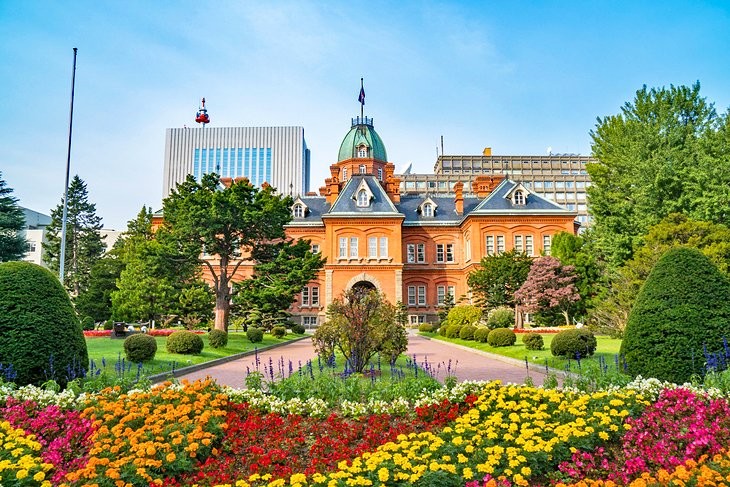 Sapporo, Hokkaido
Sapporo, Hokkaido
Odori Park is the center of downtown Sapporo. The Sapporo TV Tower and Mount Moiwa offer views over the city. The Sapporo Snow Festival is held each February.
12. Fushimi Inari-taisha Shrine, Kyoto
Fushimi Inari-taisha Shrine in southern Kyoto is famous for thousands of scarlet-colored gates. The trails lead to the forest around Mt. Inari.
Inari, the Shinto god of rice, is honored here. Visitors can hike to the top of Mt. Inari, dotted with shrines and smaller gates.
13. Koyasan Okunoin
Koyasan Okunoin is a sacred pilgrimage spot with the mausoleum of Kobo Daishi, the founder of Shingon Buddhism. The cemetery features over 200,000 tombstones.
Visitors cross the Ichinohashi Bridge and pass the Gokusho Offering Hall. The Gobyobashi Bridge separates the sacred center from the rest of the cemetery.
14. Kiyomizu-Dera, Kyoto
Kiyomizu-Dera, or the Pure Water Temple, was built in 780 CE. The UNESCO World Heritage Site is known for its wooden stage and views of Kyoto.
The Jishu Shrine and Otowa Waterfall are important sites on the grounds. The temple is beautiful during cherry blossom season and in the fall.
15. Shinjuku Gyoen National Garden, Tokyo
Shinjuku Gyoen park features green spaces, walking paths, ponds, and floral displays. The park was built during Japan’s Edo Period.
The park includes Japanese, English, and French landscape gardens. It is a popular spot for cherry blossoms.
16. Hakone Open-Air Museum, Hakone
The Hakone Open-Air Museum is a sculpture park that spreads over 17 acres. Opened in 1969, it features over 100 sculptures.
The Symphonic Sculpture allows visitors to climb a stained-glass tower. The museum has an indoor exhibit with a collection of Picasso’s works.
17. Naritasan Shinsho-ji, Narita
Naritasan Shinsho-ji Temple is a Buddhist temple dating back over 1,000 years. The temple protects a statue of Fudo Myoo.
The temple grounds include pagodas, a park, and main halls. The approach to the temple features restaurants and handicraft stores.
18. Okinawa Churaumi Aquarium
The Okinawa Churaumi Aquarium is known for its Kuroshio Tank. The tank features whale sharks and manta rays.
The aquarium includes a deep-water exhibit and an area for tiger and bull sharks. Outside are pools for dolphins, sea turtles, and manatees.
19. Matsumoto Castle, Nagano
Matsumoto Castle, built from 1592 to 1614, is located in Nagano. The castle has maintained its wooden interiors.
Matsumoto is designated as a “National Treasure of Japan.” The castle is beautiful in the spring with cherry blossoms.
20. Arashiyama Monkey Park, Kyoto
Arashiyama Monkey Park features views over Kyoto and Japanese macaque monkeys. Visitors can feed the monkeys with food purchased at the park.
The top of the peak provides a view of Kyoto and mountain peaks. The park is wonderful in spring and fall.
21. Kenrokuen Garden, Kanazawa
Kenrokuen Garden is designed around the six essentials for a perfect garden: spaciousness, seclusion, antiquity, abundant water, views, and artificiality.
The grounds feature pools, brooks, bridges, teahouses, and stones. The park is beautiful in spring and fall.
Tips for Making the Most of Your Visit to Japan
- Shoulder Season Travel: Visit during the quieter shoulder seasons to avoid crowds. Enjoy spring cherry blossoms, fall colors, and snow-covered historic structures.
- Faster Than a Speeding Bullet (Train): Use Japan’s efficient public railway system, including the Shinkansen Bullet Train. Book your Japan Rail Pass or rail tours before departure.
Best Time to Visit Japan
- Spring (March and April): Mild weather, cherry blossoms, and fewer crowds.
- Summer: Hot and humid. Head to the mountains and countryside to escape the heat.
- Fall: Cooler weather, autumn colors, and discounted prices.
- Winter: Cold winters or mild temperatures. The alpine regions are great for skiing.
According to research from the Japan National Tourism Organization in 2023, spring and autumn are the most popular seasons for tourism due to the pleasant weather and cultural events.
Top 5 Search Intentions of “What Are the Top Tourism Destinations in Japan”
- Planning a Trip: Users want to find the best places to visit for their upcoming trip.
- Seeking Inspiration: Users are looking for ideas and inspiration for travel destinations.
- Learning About Culture: Users are interested in exploring Japan’s cultural and historical sites.
- Finding Unique Experiences: Users want to discover unique and memorable travel experiences.
- Comparing Destinations: Users are comparing different destinations to make informed decisions.
FAQs About Tourism Destinations in Japan
1. What is the most popular tourist destination in Japan?
Kyoto is arguably the most popular tourist destination in Japan, known for its historic temples, gardens, and traditional atmosphere. According to the Japan National Tourism Organization (JNTO), Kyoto consistently ranks high in visitor satisfaction surveys.
2. Which city in Japan is best for tourists?
Tokyo is often considered the best city for tourists due to its mix of modern and traditional attractions, excellent transportation, and diverse culinary scene. Tokyo offers something for everyone, from bustling shopping districts to serene gardens.
3. What are some unique cultural experiences in Japan?
Unique cultural experiences in Japan include attending a tea ceremony, visiting a traditional onsen (hot spring), participating in a calligraphy workshop, and watching a sumo wrestling match. These activities provide deep insights into Japanese culture.
4. When is the best time to visit Japan for cherry blossoms?
The best time to visit Japan for cherry blossoms is typically from late March to early April. The exact timing can vary depending on the region, with southern areas blooming earlier than northern areas. The Japan Meteorological Agency provides detailed forecasts each year.
5. How can I travel around Japan efficiently?
The most efficient way to travel around Japan is by using the Shinkansen (bullet train) network. Japan Rail Pass offers cost-effective travel for tourists covering most major cities. Local trains and buses are also available for shorter distances.
6. What are some must-try foods in Japan?
Must-try foods in Japan include sushi, ramen, tempura, okonomiyaki, and takoyaki. Each region has its own specialties, so be sure to try local dishes. Gurunavi and Tabelog are reliable resources for finding restaurants.
7. What are some good day trips from Tokyo?
Good day trips from Tokyo include Hakone, Kamakura, and Nikko. Hakone is known for its natural beauty and hot springs, Kamakura for its temples and the Great Buddha statue, and Nikko for its shrines and scenic landscapes.
8. Are there any good ski resorts in Japan?
Yes, Japan is famous for its excellent ski resorts, especially in Hokkaido and Nagano. Niseko in Hokkaido and Hakuba in Nagano are popular among international skiers for their powder snow and facilities. SnowJapan provides comprehensive information on ski resorts.
9. What are some famous festivals in Japan?
Famous festivals in Japan include the Sapporo Snow Festival, Gion Matsuri in Kyoto, and Awa Odori in Tokushima. These festivals offer vibrant displays of Japanese culture, music, and dance.
10. How can I book accommodations and transportation in Japan?
You can book accommodations through websites like Booking.com, Agoda, and Japanican. For transportation, the Japan Rail Pass can be purchased online or through authorized travel agencies. Local transportation can be managed using Suica or Pasmo cards.
Ready to explore the top tourism destinations in Japan? Let SIXT.VN handle all your travel needs, from airport transfers to hotel bookings and guided tours. Contact us today to start planning your unforgettable Japanese adventure!
Address: 260 Cau Giay, Hanoi, Vietnam
Hotline/Whatsapp: +84 986 244 358
Website: SIXT.VN
Don’t let the challenges of planning a trip to Japan overwhelm you. SIXT.VN offers comprehensive travel services to make your journey smooth and enjoyable. We provide personalized itinerary planning, reliable airport transfers, a wide range of hotel options, expert advice on local attractions, and hassle-free booking for flights and tours. Let us take care of the details so you can focus on experiencing the best of Japan.
Are you ready to start your unforgettable journey to Japan? Contact SIXT.VN today and let our expert team help you plan the perfect trip. From booking your flights and accommodations to arranging tours and transportation, we’ve got you covered. Experience Japan with ease and confidence – book your adventure with SIXT.VN now!



